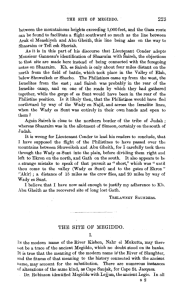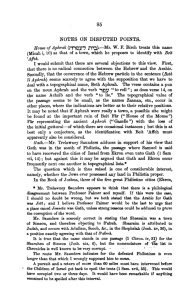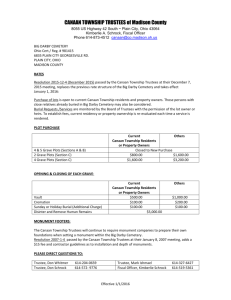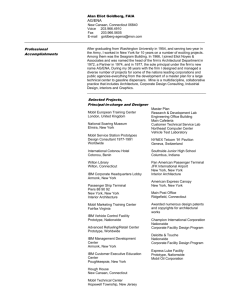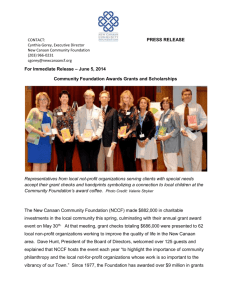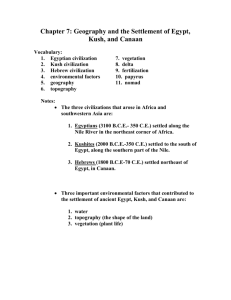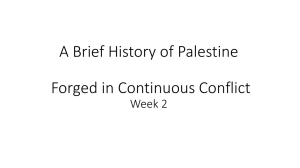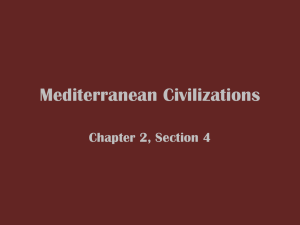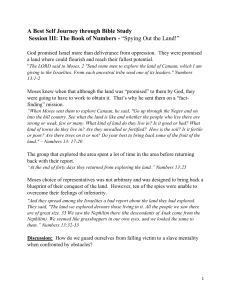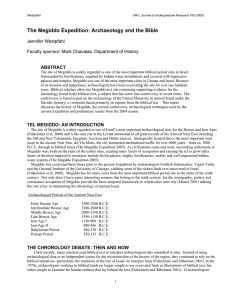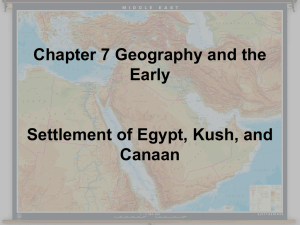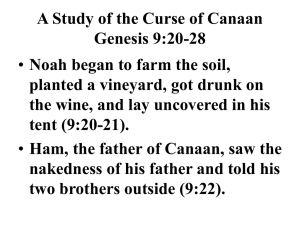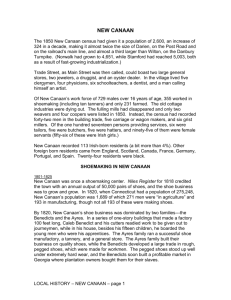LB – 1550 –1200
advertisement
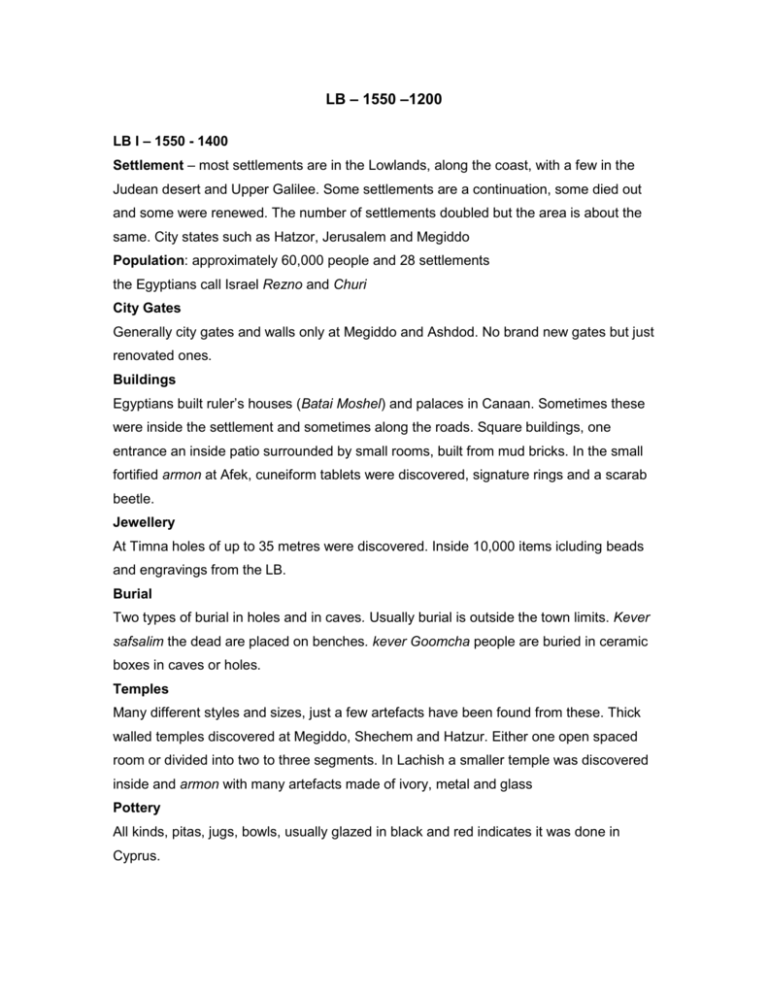
LB – 1550 –1200 LB I – 1550 - 1400 Settlement – most settlements are in the Lowlands, along the coast, with a few in the Judean desert and Upper Galilee. Some settlements are a continuation, some died out and some were renewed. The number of settlements doubled but the area is about the same. City states such as Hatzor, Jerusalem and Megiddo Population: approximately 60,000 people and 28 settlements the Egyptians call Israel Rezno and Churi City Gates Generally city gates and walls only at Megiddo and Ashdod. No brand new gates but just renovated ones. Buildings Egyptians built ruler’s houses (Batai Moshel) and palaces in Canaan. Sometimes these were inside the settlement and sometimes along the roads. Square buildings, one entrance an inside patio surrounded by small rooms, built from mud bricks. In the small fortified armon at Afek, cuneiform tablets were discovered, signature rings and a scarab beetle. Jewellery At Timna holes of up to 35 metres were discovered. Inside 10,000 items icluding beads and engravings from the LB. Burial Two types of burial in holes and in caves. Usually burial is outside the town limits. Kever safsalim the dead are placed on benches. kever Goomcha people are buried in ceramic boxes in caves or holes. Temples Many different styles and sizes, just a few artefacts have been found from these. Thick walled temples discovered at Megiddo, Shechem and Hatzur. Either one open spaced room or divided into two to three segments. In Lachish a smaller temple was discovered inside and armon with many artefacts made of ivory, metal and glass Pottery All kinds, pitas, jugs, bowls, usually glazed in black and red indicates it was done in Cyprus. Egyptian rule in LB Gaza, Yaffo, Megiddo and Bet Shean. It is the beginning of the 18th dynasty, Yachmas is the founder. He conquers the capital of the Hyksus (Tzo’an – Cairo = Tzoan = gypsies, Egypt). Yachmas - Amenchotep I - Thutmoses I. He conquers Syria, Lebanon until the Euphrates and as a result there is rule in parts of Canaan. Hatshapsut next in line. The northern kingdom Mitani eventually becomes the dominant force in the area Thutmoses III 1504 - 1450 Rebellion from the King of Kadesh and king of Megiddo brought Thutmoses III on his 1468 campaign throughout Israel. This first campaign is recorded on the walls at the temple of Karnak. Thutmoses is victorious. Names of defeated cities in Karnak include Bet Shean, Yokneam. He brought peace and reigned up until south Lebanon Achanaten II 1452 – 1424 3 campaigns to Canaan, succeeds on his third and takes captives. Bring stability between Egypt and Mitani. Achanaten IV – 1364 – 1347 Moves the capital of Egpyt to Middle Egyot, El Amarna in order to make his reforms easier. Makes a radical religious change bronging in monotheism, the name of the god is “Ra” El Amarna documents 379 Acadian cuneiform clay tablets containing names to that are also in the Bible. From these documents it is possible to learn what life was like in Canaan. Also mentioned are the “Chabiru” and the “HaAfiru” which is a possible reference to the Hebrews. The 19th Dynasty - 1400 - 1200 Setti I – 1291 - 1279 After a two year reign of Rameses I, Setti campaigns until Megiddo, goes up to Lebanon, Syria and beyond the Jordan Rameses II – 1279 – 1212 Reigned for 66 years and built extensively, he fought the Hittites and eventually there was peace agreement (HaHoze HaKessef) between them. The *Papyrus Anastasi” from his day contains the description of the main roads throughout the Levant. Merneptah Rameses son who fought the Libyans and the Sea Peoples. Merneptah’s Stele (matzevet) commemorates the victory. At the bottom a poem depicts his victorious campaign in Canaan including the defeat of Ashkelon, Gezer Yanoam and Israel.
